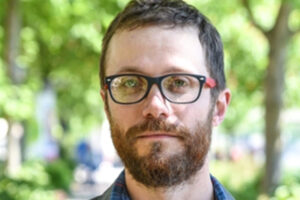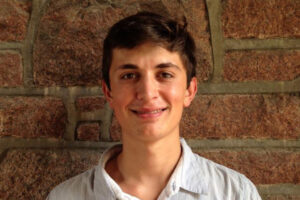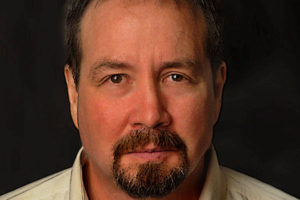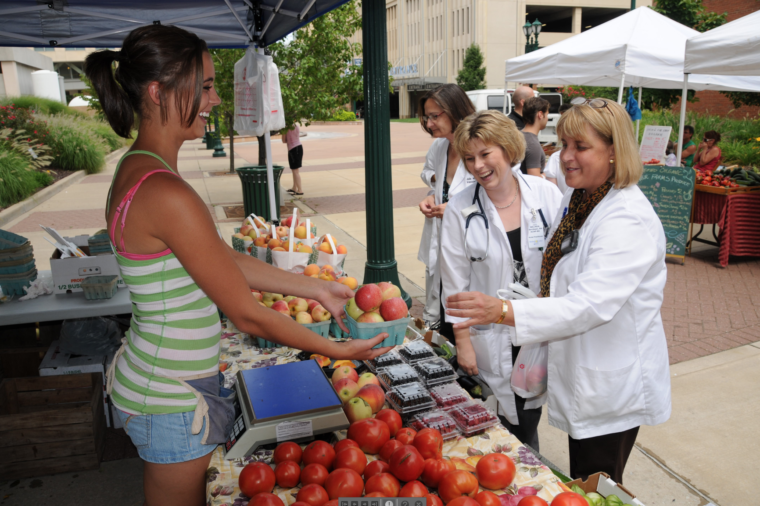If you’ve been to your neighborhood farmers market or seen a small “local” section pop up in your grocery store, you may have noticed a trend: People want to know where their food is coming from, and the agricultural industry is responding. The number of farmers markets in the U.S. has skyrocketed in recent years, but with an aging population of farmers, who’s supporting this growth?

Enter the new American farmer, a term used to describe a movement of younger people new to agricultural work who do it for different reasons than the conventional farmer. It’s a phrase used by Andrew Flachs, who recently earned his PhD in anthropology in Arts & Sciences at Washington University in St. Louis.
In a new paper in the journal Rural Sociology, Flachs and Matthew Abel, a graduate student in sociocultural anthropology at Washington University, show how a new breed of American farmers are being drawn to the field by factors such as higher education, personal politics, disenchantment with urban life and the search for an authentic rural identity.
Flachs and Abel’s research identifies several hot spots where this movement is taking shape: the West Coast, central Texas and Oklahoma, central Florida and the Great Lakes region.
“We’re seeing these hot spots pop up in the peripheries of hip cities,” Flachs said. “Some of these places might seem obvious, like the West Coast and the northern Midwest around Madison, the Twin Cities and Chicago. But we also see some things that aren’t totally expected.”
Among the unexpected trends he found are that east Texas and the southern Midwest are becoming increasingly important for this kind of agriculture. Appalachia, which has historically been a hub, essentially disappeared from the map.

Flachs, who earned his doctorate from Washington University in 2016, spent the following year as a Volkswagen Foundation Exchange Postdoctoral Fellow with the Karl Jaspers Centre for Advanced Transcultural Studies at Heidelberg University in Germany. He is now an assistant professor of anthropology at Purdue University.
Both Flachs and Abel have been advised by Glenn Davis Stone, professor of anthropology and environmental studies in Arts & Sciences, whose research focuses on ecological, political and cultural aspects of agriculture, including sustainability, crop biotechnology and GMOs. While the term “new American farmer” has been around for awhile, our understanding of who fits that description has been evolving, Stone said.
“It is well known that alternative food production has surged in recent years, but we have a long way to go to understand what drives this new form of farming and how it varies across the country,” Stone said. “In this article, Flachs and Abel do a thoughtful job of making sense of the ‘new agrarianism’ and demonstrate fascinating patterning of hot spots and cold spots.”
Stone also is a faculty lead for the food studies focus in anthropology and the Agri-Food Workshop, an interdisciplinary program for faculty and students with an interest in food-related studies. He said interest in food studies has been growing steadily around campus and especially so within anthropology.

“Although we certainly have not lost our interest in cultural variation around the world, this department has developed a remarkably strong research focus on our own backyard, including new forms of farming, wild resource collecting and foodways in North America,” Stone said.
In this study, Flachs and Abel build a model that counts how many traits associated with new American agrarianism appear in reports filed by counties across the nation. With agricultural census data from the U.S. Department of Agriculture from 1997-2012, they considered factors such as average sales per farm; number of certified organic farms; owners under age 34; number of farms selling directly to individuals; proximity to farmers markets and more.
The findings show that newer farmers appear to thrive on the outskirts of cities that provide high demand and purchasing power, a large population and a healthy number of farmers markets.
“St. Louis is unfortunately out of a model like this that looks at national-level trends,” Flach said, “because it is surrounded by commodity agriculture in the Mississippi River Valley. However, Franklin County is relatively high scoring in our model, which makes sense as many of those farmers likely sell in St. Louis.”
The price of real estate is another important factor in determining where these markets can flourish. Rural developers have steadily increased farm real estate over the past few decades, which could deter newer farmers from settling down there. Concentrations of urban wealth drive up real estate costs in the city while simultaneously creating new niche markets, making space for younger farmers to exist between urban and rural landscapes.
Identifying where new and small farmers live and work will pave the way for further research on what’s motivating this budding sector of the agricultural economy. New American farmers occupy an important intersection of niche marketing strategies, environmental politics and rural demographic change that could have a significant impact on food production and social life in agrarian landscapes, according to the paper.
Flachs points out that many new American farmers approach agriculture with hopes to embody a nostalgic past where food and environments were healthier, but others may be simply trying to make a living as farmers amid dissatisfaction with conventional agribusiness. Although it’s easy to stereotype, it’s unlikely that all new American farmers fit this description.
“Sometimes, when we think about these farmers, we picture young people with liberal arts degrees looking for some kind of connection to the earth or wanting to work with their hands,” Flachs said. “What we found is that that’s probably not the most representative view of who these people actually are. I’m glad to have my stereotype broken up by the data.”
This story is based on material contained in a news release issued by Purdue University. The research was funded by Purdue, Washington University in St. Louis and the Volkswagen Foundation. Flachs can be reached at 765-494-2774 or aflachs@purdue.edu.
